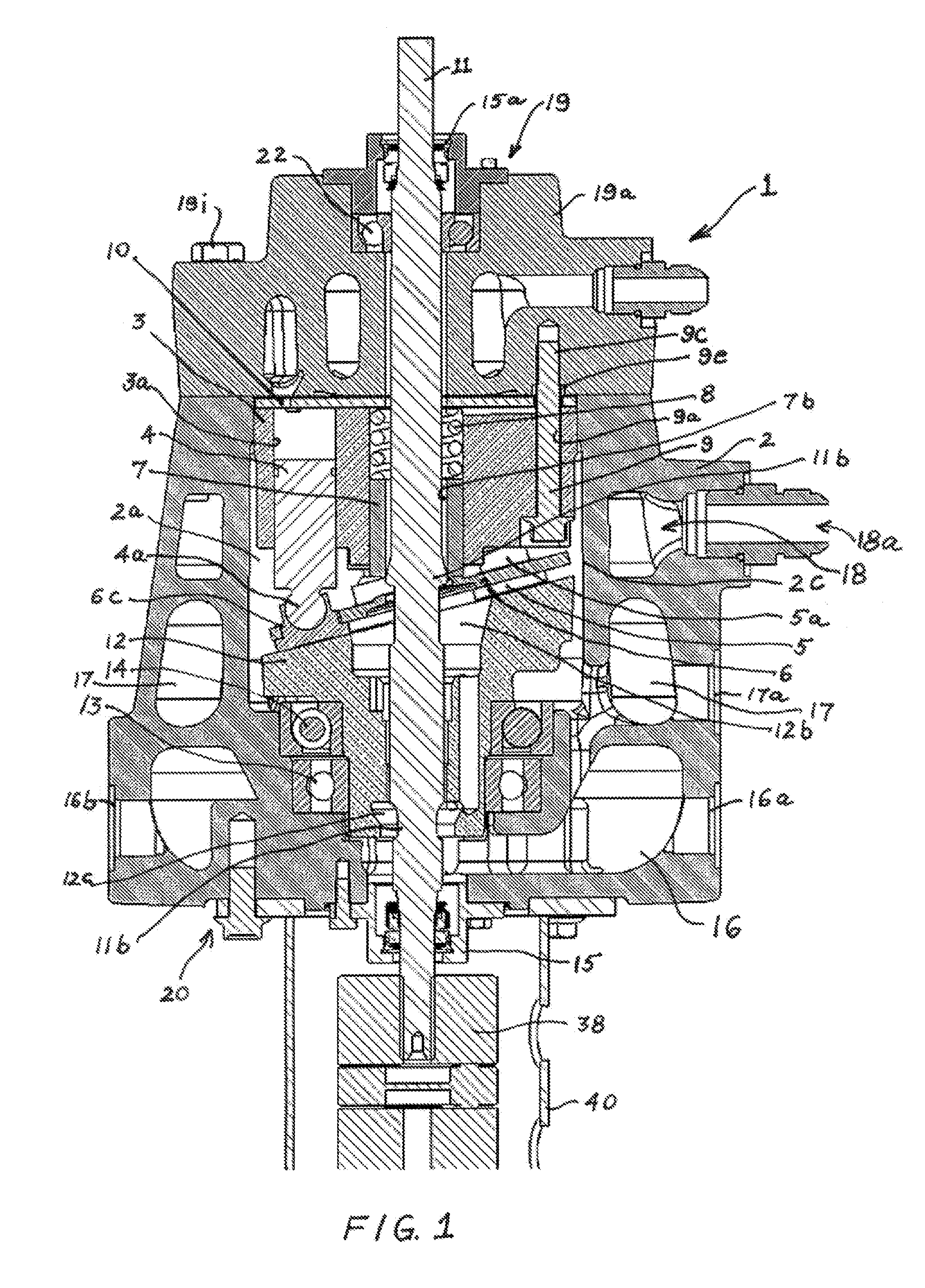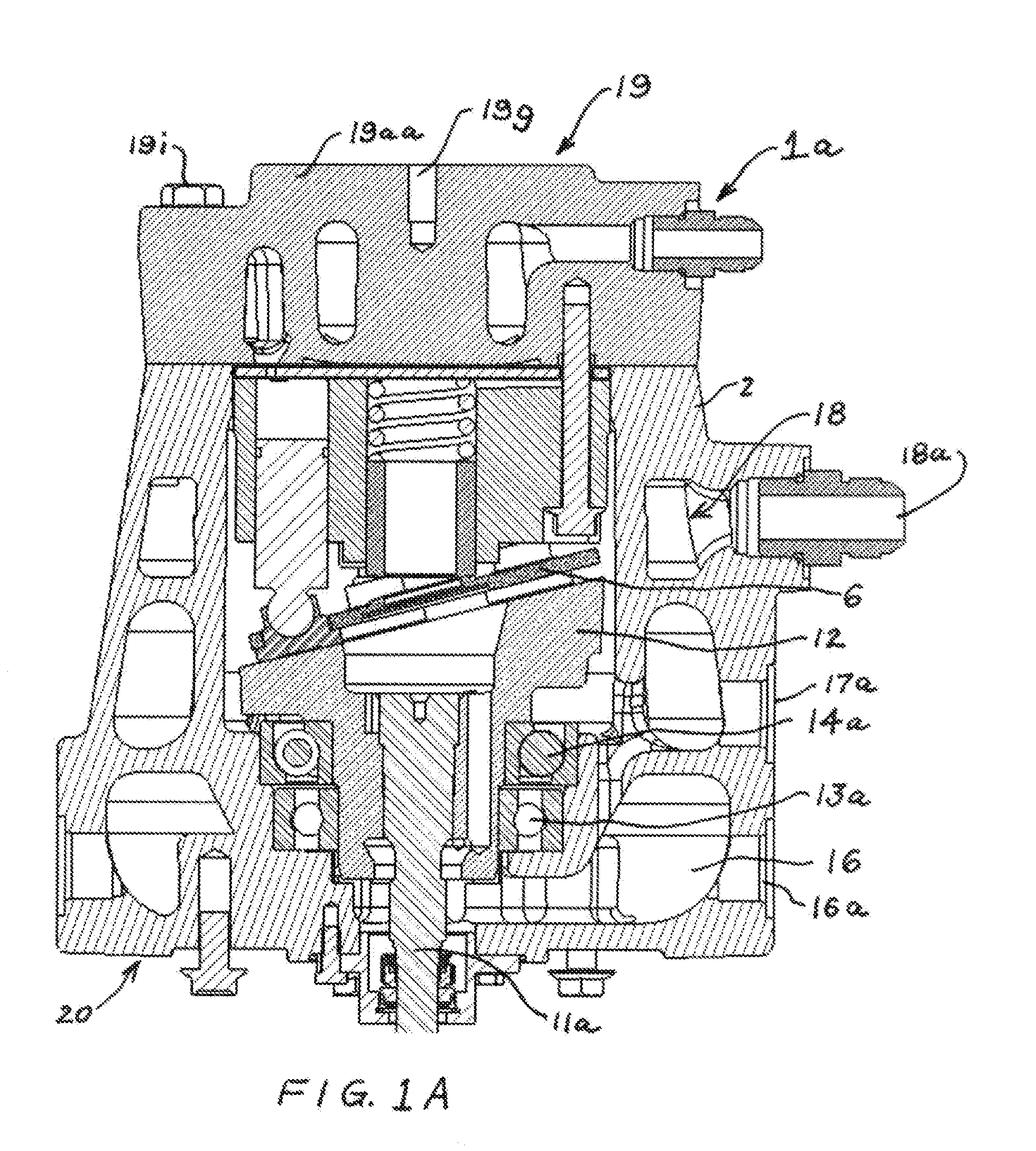There are several primary technology and design hurdles for improving CO2 gas compressors; these are: (1) higher pressures required, (2) unique properties of CO2, (3)
lubrication of working components due to the first two items, and (4) manufacturability and lack of economy of scale with
resultant cost drivers.
Ramifications are conditions that affect the durability and operational efficiency of such and similar compressors in a vapor
compression system.
A primary reason is because oil (liquid) is known to coat the walls of heat exchangers reducing the
heat transfer efficiency of the
thermodynamic cycle, and / or oil
pooling in undesirable points of a gas circuit which may reduce the oil in the compressor to critically low levels.
Most conventional designs allow undesirable and substantial
gas mixing enhanced by large internal areas of contact with oil wetted dynamic parts and / or stirred oil foam and / or mist droplets, large surface exposures covered with oil, and
free flow into and throughout
lubricant containing regions of the machine including the oil reservoir
sump area.
It is known in the art that many oil lubricated compressors utilize rolling pistons or
crankshaft reciprocating pistons with piston rings or other designs which utilize an internal oil sump reservoir wherein gas / oil
exposure and mixing is difficult if not impossible to avoid entirely.
For this reason certain machines (in particular some CO2 axial, scroll, rolling piston,
crankshaft and screw compressors) ignore the issue altogether, allowing prolific oil transport through the entire system counting on the oil entrained gas to lubricate the working parts, and / or require significant and expensive additional
oil separation methodology in the system.
The downside of this approach is that acceptance of high oil circulation ratio (OCR) dictates acceptance of system and compressor inefficiencies and other undesirable consequences.
This cost and design tradeoff may easily lead to related costs of more expensive external
oil separation and management components while yielding dubious satisfactory results.
Whether intentional or unintentional, if valve designs are inadequate for liquid
refrigerant or oil conditions generated for any reason, liquid through-put manifestations are known to cause detrimental effects to compressors.
If excessive liquid transport through valves becomes significant enough, intake valves might oil-can, deform, or fracture, and / or
discharge valves might likewise see deformation and / or potential valve backer failure depending on the strength of the backer structure.
This
route is largely overlooked in regard to oil separation and
temperature control of the working gas, reducing the ultimate efficiency of powering the working gas in and out of the compressor without compromising the lubrication of working parts.
Should oil separation methods employed in the
external circuit fail, or superheat of the return
refrigerant be insufficient, liquid (oil and / or
refrigerant) may result in high OCR or liquid slugs to the compressor inlet port.
Compressor failure or damage may result as liquid oil and / or liquid refrigerant produces a hydraulic manifestation which effectively does not allow normal gas compression because of the
liquid medium state of the compound.
The
resultant pumped liquid, which is considered incompressible, imparts slamming stress forces to thin
reed valve components which may fracture or otherwise deform.
For vertical oriented axially motors, pumps, compressors, and other shaft driven devices, pumping
lubricant to high areas from an oil reservoir / sump generally requires an
oil pump as a conventional option to oil immersed operation which can be inefficient.
Active positive displacement pumps add expense and weight and other design and maintenance logistics burdens.
However, this centrifugal pumping concept has not been applied to improved effect in the design of axial piston wedge driven compressors.
Oil can be distributed around the wedge perimeter but a solution has not been found for splash lubricating the inner surface of the wedge and maintaining a continuous even hydrostatic film while the
spinning wedge is flinging oil off of those very surfaces in the opposite direction.
Compounding the problem is the fact that the wedge is sloped and therefore oil drains off the surface quickly when stopped.
Relying on splash lubrication routed around and over the top of the wedge cannot be counted on to coat the wedge sufficiently and consistently for dry starting and
long term durability.
This is a sizeable and sometimes impossible challenge when multiple areas must receive the quantity of oil required at the proper locations but
physical limitations of shaft
oil distribution prohibit it.
However, the
scroll compressor will not function properly or fail if operated in a horizontal position.
The upshot is that taller compressors with vertical orientations may not qualify for use in the design of limited headroom, low profile packaged equipment designed for tight vertical spaces such as interstitial spaces such as above ceilings.
Driving a compressor with an open mechanical shaft such as provided by a
combustion engine is not easily accomplished as a totally sealed hermetic machine.
However, many conventional piston compressors have a
high pressure head and / or intake and exhaust manifolds adjacent to and blocking piston cylinders.
In conventional axial piston machines, this head / manifold region with precision internal valve components does not allow a thru-shaft penetration.
A hermetic or semi-hermetic immersed oil motor configuration might be an alternate consideration for a bottom mounted motor; however several technological and cost hurdles exist for efficient operation.
However and as previously referred, the head arrangement of most compressors does not allow thru penetration of a
drive shaft.
In this position, during compressor idle / off conditions there is a risk that oil migration will leak past the pistons collecting and
pooling in valve areas and manifolds.
After idle shut-down, compressor
start up risks damage to sensitive valving due to oil liquid slugging and hydraulic canning caused by oil which has settled in undesirable areas.
Even if this oil is expelled from these regions without incident, the effect is likely to require collection and return of this oil to the compressor.
To add to this hurdle, there is no compact or simple provision for an oil sump located within the compressor at the lowest point, inferring an oil flooded compressor arrangement; not an ideal
scenario.
 Login to View More
Login to View More  Login to View More
Login to View More 


